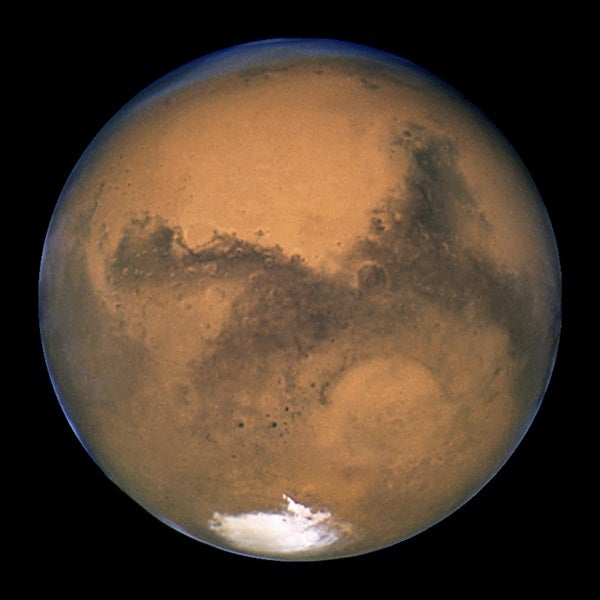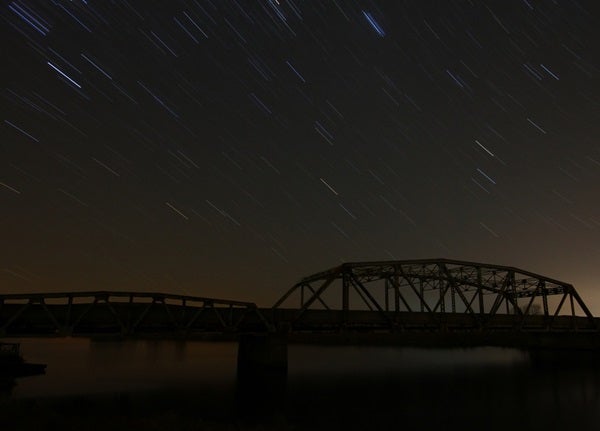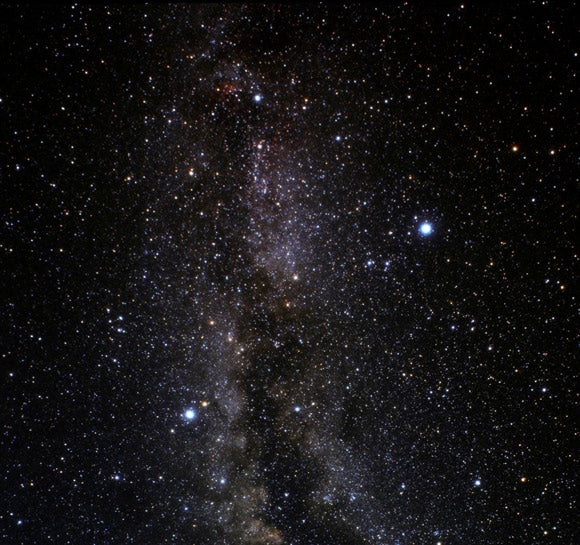Friday, November 4
The days of viewing Saturn in the evening sky are dwindling rapidly. You can find the ringed world about 10° high in the southwest 45 minutes after sunset this week. The planet shines at magnitude 0.5 and shows up quite easily if you have a clear, unobstructed horizon. Use Venus as a guide. This evening, Saturn lies 7° (the approximate field of view through 7×50 binoculars) to the right of its brilliant neighbor.
Saturday, November 5
The variable star Algol in Perseus reaches minimum brightness around 11:31 p.m. EDT, when it shines at magnitude 3.4. If you start tracking it this evening, you can watch it more than triple in brightness (to magnitude 2.1) by dawn. This eclipsing binary star runs through a cycle from minimum to maximum and back every 2.87 days. Algol remains visible all night, passing nearly overhead around 1 a.m. local daylight time.
Sunday, November 6
Mars continues to put on a nice show these November evenings. The magnitude 0.4 Red Planet lies among the background stars of Sagittarius and appears 25° high in the south-southwest after darkness falls. (It will pass into Capricornus on November 8.) A telescope shows the planet’s 7″-diameter disk, though you’ll be hard-pressed to see much surface detail except under exceptional conditions. This evening, Mars lies some 8° to the lower right of the waxing crescent Moon. The two were in conjunction (when Luna passed 5° due north of the ruddy world) early this morning, but both were then below the horizon from North America.
For those areas of the United States and Canada that observe daylight saving time, set your clocks back one hour this morning. The official switch occurs at 2 a.m. local daylight time, which becomes 1 a.m. local standard time. The switch means sunrise and sunset both arrive an hour earlier today than they did yesterday. So, at least by clock time, the latest sunrise of the year occurred yesterday morning.
First Quarter Moon occurs at 2:51 p.m. EST. As darkness descends across the Northern Hemisphere this evening, observers will find the half-lit Moon due south and nearly halfway from the horizon to the zenith. Our satellite lies on the border between the constellations Aquarius the Water-bearer and Capricornus the Sea Goat.
Tuesday, November 8
Although Jupiter passed on the far side of the Sun in late September, it has already returned to prominence before dawn. The giant planet rises nearly three hours before the Sun and climbs some 15° above the eastern horizon by the time twilight starts to paint the sky. Jupiter shines brilliantly at magnitude –1.7 and shows a 32″-diameter disk when viewed through a telescope.
Wednesday, November 9
As if the earlier sunsets this week don’t put you in mind of winter, the midevening appearance of the season’s most conspicuous constellation surely will. Orion the Hunter rises in the east around 9 p.m. local time and appears halfway to the zenith in the southeast by midnight. Look for three 2nd-magnitude stars in a line that form the Hunter’s belt. The constellation’s brightest stars are ruddy Betelgeuse and blue-white Rigel.
Thursday, November 10
The annual Leonid meteor shower ramps up this week. The shower got underway November 6, when Earth encountered the outer edge of the debris stream laid down by Comet 55P/Tempel-Tuttle during its innumerable passes through the inner solar system. With the Moon currently waxing toward Full, the best views will come in the couple of hours after the Moon sets and before twilight starts to paint the sky. The shower will peak the morning of November 17, unfortunately under the watchful eye of a waning gibbous Moon.
Although the calendar says November, the Summer Triangle of bright stars remains prominent during the early evening hours. Look nearly overhead after darkness falls and you’ll spot Deneb, a conspicuous point of light despite being the faintest of the three luminaries. Brighter Vega lies west of Deneb and intermediate Altair appears to their south.
Saturday, November 12
Brilliant Venus stands out in the southwestern sky during the early evening. The planet lies nearly 15° above the horizon a half-hour after sunset and doesn’t set until after twilight comes to a close. At magnitude –4.1, Venus is the brightest object in the evening sky after the Moon. Under a clear, dark sky this evening, binoculars will show you the Lagoon Nebula (M8) just 1° south of the planet. (Venus remains within 2° of this bright stellar nursery from November 11–13.) A telescope also reveals the planet’s 15″-diameter disk, which appears three-quarters lit.
Sunday, November 13
Full Moon arrives at 8:52 a.m. EST tomorrow morning. It rises in the east about 10 minutes before the Sun sets this evening and reaches its peak in the south around 11:30 p.m. local time. Coincidentally, our satellite reaches perigee, the closest point in its orbit around Earth, at 6:21 a.m. EST tomorrow, just 2.5 hours before Full Moon. It then lies 221,524 miles (356,509 kilometers) away from us, its closest approach of the year. Tonight’s Full Moon thus is the largest (33.5′ across) of 2016. Although this is just 7 percent bigger normal — a difference that is hardly noticeable to the naked eye — expect to hear plenty of hype surrounding this so-called Super Moon.












